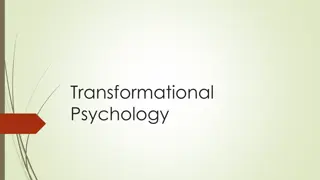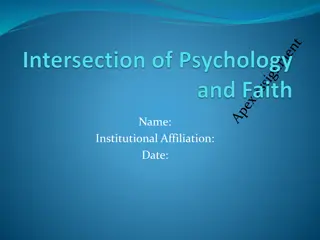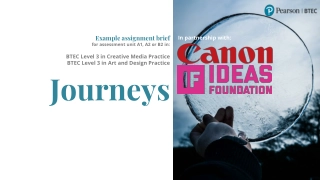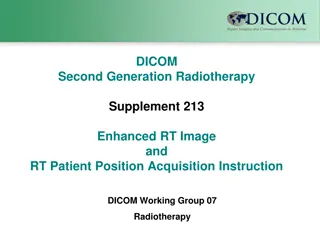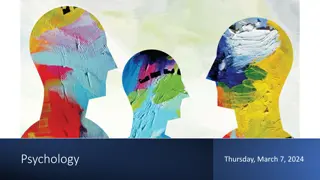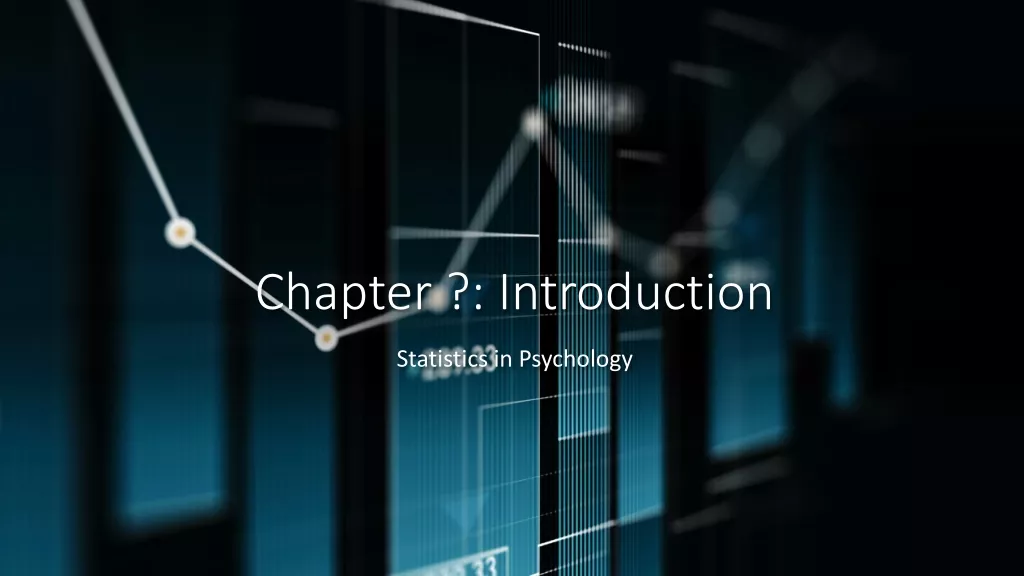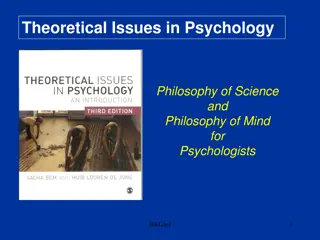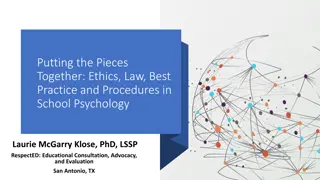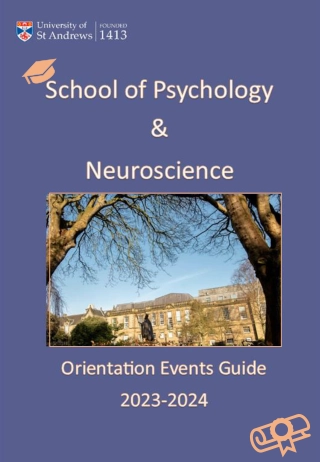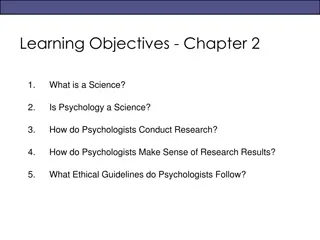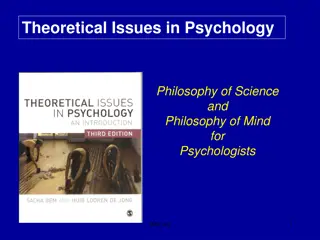The Role of Images in Psychology and Photography
Explore the fascinating connection between images and psychology, delving into topics such as creativity, dreams, meditation, and the decisive moment in photography. Discover how psychologists analyze the impact of images on our perception, creativity, and social media interactions. Uncover the essence of capturing unique fleeting moments in photography and the art of being in the right place at the right time.
Download Presentation

Please find below an Image/Link to download the presentation.
The content on the website is provided AS IS for your information and personal use only. It may not be sold, licensed, or shared on other websites without obtaining consent from the author. Download presentation by click this link. If you encounter any issues during the download, it is possible that the publisher has removed the file from their server.
E N D
Presentation Transcript
1952, Simon and Schuster Cover by Henri Matisse The Bible for Photographers Robert Capa ( arguably the greatest combat and adventurer photographer in history ) There is nothing in this world that does not have a decisive moment. T Cardinal de Retz (1613-1679) But what exactly is ?
Images la Sauvette Photos taken on the run, slyly, hastily, stolen HCB in 1989, Reuters/Charles Platiau HCB s escape from a POW camp
What might a psychologist say? The role of images in: creativity dreams meditation & altered states psychotherapy The psychology of how we: create react to and share images (especially in social media) Decisive Moment Selfie Perception and Imaging: Photography as a Way of Seeing (5th edition) John Suler & Richard D. Zakia (Focal Press, 2018)
The Puddle Jumper Derriere la Gare Saint-Lazare, Paris 1932, Magnum Photos
8. Capturing a Unique Fleeting Moment Photographers deal in things which are continually vanishing and when they have vanished there is no contrivance on earth which can make them come back again. For me the camera is a sketchbook, an instrument of intuition and spontaneity, the master of the instant which, in visual terms, questions and decides simultaneously. To take photographs is to hold one s breath when all faculties converge in the face of fleeing reality. It is at that moment that mastering an image becomes a great physical and intellectual joy. There is a creative fraction of a second when you are taking a picture. Your eye must see a composition or an expression that life itself offers you, and you must know with intuition when to click the camera. That is the moment the photographer is creative. Oop! The Moment! Once you miss it, it is gone forever.
8. Capturing a Unique Fleeting Moment Not manufactured or staged photography Accepting that life is fluid and transitory (Buddhism!) Preserving a precious moment that will otherwise disappear forever Organizing a complex scene so we can explore it in the photo Being in the right place, at the right time, with the right skills Requires physical adeptness. You can t be a klutz! The stealthful tracking and capturing of hunting (Sontag s On Photography ) HCB s escape from a POW camp Photojournalism and street photography! But what about portraits, landscapes, architectural photography?
7. A Candid Photo of People in Real Life In photography, the smallest thing can be a great subject. Photography is nothing it's life that interests me. It seems dangerous to be a portrait artist who does commissions for clients because everyone wants to be flattered, so they pose in such a way that there s nothing left of truth. One has to tiptoe lightly and steal up to one's quarry; you don't swish the water when you are fishing. There is something appalling about photographing people. It is certainly some sort of violation; so if sensitivity is lacking, there can be something barbaric about it.
7. A Candid Photo of People in Real Life Everyday people as well as the rich and famous Little human moments that are spontaneous and genuine but also symbolize archetypal human struggles and triumphs Being the unobtrusive observer, a fly on the wall, a spy, or stalker? A humanitarian indifferent to people (John Malcolm Brinnin) Pros and cons of hiding the subject s identity Ethics in our age of ubiquitous photos, lost privacy, and digital identity Is the decisive moment an outdated concept due to ethics?
6. Sensing Visual Coalescence We often hear of camera angles? (that is, those made by a guy who throws himself flat on his stomach to obtain a certain effect or style), but the only legitimate angles that exist are those of the geometry of the composition. To take photographs means to recognize simultaneously and within a fraction of a second both the fact itself and the rigorous organization of visually perceived forms that give it meaning. It is putting one s head, one s eye, and one s heart on the same axis. People think far too much about techniques and not enough about seeing. In photography visual organization can stem only from a developed instinct.
6. Sensing Visual Coalescence It s the COMPOSITION, stupid! (the rule of thirds, golden ratio, balance, etc.) Subconsciously noticing the Pr gnanz of Gestalt Psychology (satisfying the perceptual need for order) A sensitivity to the coalescence of lines, forms, and light/dark around and embellishing the meaning of the subject It s instinctively recognized and captured on the run A spontaneity resulting from training, experience, and intuition What we hope ever to do with ease, we must first learn to do with diligence. - Samuel Johnson
5. Figure/Ground Relationships A duality and synergy between the subject and the background They alternate: figure becomes ground, ground becomes figure Our attention keeps shifting between them Specific rules about the background elements? They should contribute to the overall composition and subject They should be in focus with no shallow depth of field or bokeh (?) But might ambiguous background shapes work?
Simiane-la-Rotonde, France. 1969, from the Collection of Jeffrey M. Kaplan, Washington, D.C.
4. Curiosity, Anticipation of Closure, and the Gap The Gestalt Psychology Principle of Closure The mind seeks completion, wholeness, unity The DM photo depicts the moment just before completion Leave them wanting more Anticipation is making me wait! Zeigarnik Effect: unfinished things linger in the mind Curiosity about the uncertain outcome of an event suspended in time The gap that holds us in suspension A special type of negative space that tempts us with closure
Thomas Leuthard, 2012, www.flickr.com/photos/thomasleuthard/8247014537/
3. The One Hit Wonder You shouldn t overshoot. It s like over-eating or over-drinking. Burst mode or video to capture the decisive moment ? Cherry-picking ? Set-up for a walk-in photo (linger or on the run) ? It s seldom you make a great picture. You have to milk the cow quite a lot to get plenty of milk to make a little cheese. The Purist Ideal: There s only one chance. Like Zen archery I give up. And NO cropping! (?) Ezra Pound, Venice, 1971
2. Losing and Creating Oneself In order to give a meaning to the world, one has to feel oneself involved in what one frames through the viewfinder. One must always take photographs with the greatest respect for the subject and for oneself. It is a way of shouting, of freeing oneself, not of proving or asserting one s originality. It is a way of life. Photography is not documentary, but intuition, a poetic experience. It's drowning yourself, dissolving yourself, and then sniff, sniff, sniff being sensitive to coincidence. You can't go looking for it; you can't want it, or you won t get it. First you must lose your self. Then it happens. The discovery of oneself is made concurrently with the discovery of the world around us.
2. Losing and Creating Oneself Merging and losing oneself into the scene. It s intuition and mindfulness Awareness without memory, desire, or understanding The activation of punctum (Roland Barthes) The projection and creation of oneself in the scene The activation of archetypal or universal truths An affirmation. Saying YES! Our leap HCB s leap
1. The Good Hour I kept walking the streets, high-strung and eager to snap scenes of convincing reality, but mainly I wanted to capture the quintessence of the phenomenon in a single image. What outings lead to a DM photo? Ernst Kris s good hour in psychoanalysis The push of anxious anticipation, frustration, self-doubt, etc. The subconscious incubation of past experience and work The triggering of a pre-formed insight about the world and oneself The AHA decisive moment of clarity The Pseudo-Good Hour (trying to please others or get praise) Therapeutic Photography
The Myth and Reality of the Decisive Moment Photo How rare is the truly decisive moment photo? Do we need strict criteria for identifying it? I don t know how to define it, but I know it when I see it. More and more I am beginning to think the photos that have taken on a life of their own must be the decisive moment. - Richard Zakia Cartier-Bresson at home, photo by John Loengard
Its YOUR decisive moment. The Decisive Moment, Kira Suler




